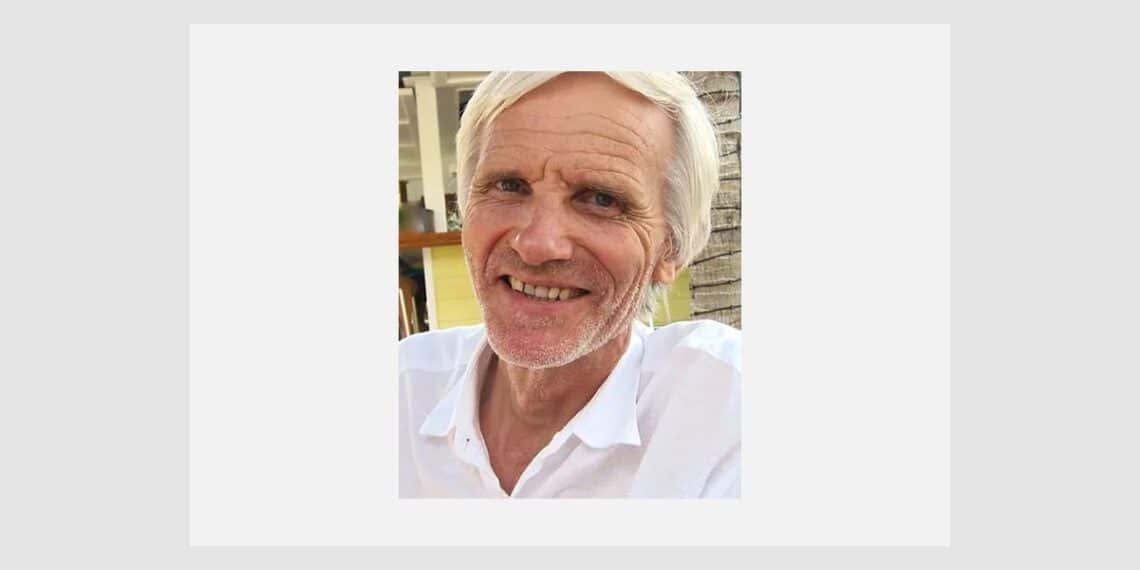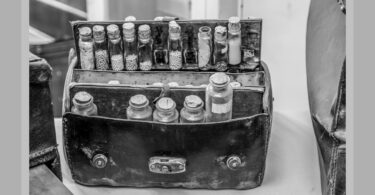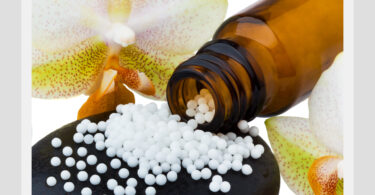I appreciate Rudi Verspoor joining the great HP debate. We have known each other via publications and internet for many years, and I greatly respect his (at times unpopular) scholarship regarding Hahnemann’s writings. I have carefully read Rudi’s four contributions over the May to August issues concerning terminology, and Hahnemann’s true model of health and illness. I have submitted some questions concerning these contributions elsewhere. Rudi makes a good point when he says that “we should at least have a clear idea of what we mean when we use a particular term, as a starting point, and we ought to also be very clear on the actual terms as Hahnemann used them”. I would like to add that I personally believe that our language should also be accessible, and make sense to as many non-homoeopaths as possible, a point that will appear repeatedly below.
It is would seem to be useful to divide our discussion about HP into three parts; Does it work? Is it homoeopathy? How does it work?
1. Does HP work? Leaving terminology aside for a moment, I believe that Rudi and I agree that HP does work. In other words, we agree that the appropriate use of potentised substances, selected using the Law of Similars, can reduce the likelihood of an otherwise unprotected person contracting a targeted infectious disease, and that in practice this action is observable, predictable and repeatable. So I will move on.
2. Is HP homoeopathy? Rudi gave the following definition;
Homeopathy: the term used to refer to the use of a medicine based on the natural law of similar resonance, according to the match of symptoms of a disease in a sick person against the similar symptom pattern (disease image) as produced in one or more healthy persons (known as “provings”) and as recorded in the Materia Medica.
On the basis of this definition, HP is not homoeopathy.
I have previously used the term “homoeopathy” to embrace anything which selects a single substance using the Law of Similars, and administers the substance using the Law of Minimum Dose. This is consistent with the first part of Rudi’s definition (use of a medicine based on the natural law of similar resonance), and covers both treatment and prevention. It is broader than both Rudi’s definition and GV’s meaning of the term. It would be an interesting poll question for readers whether they feel the word “homoeopathy” should embrace the boarder or more narrow meaning.
Rudi draws interesting distinctions between his defined meaning of the word, and other forms of prescribing using the Law of Similars. He states that The determination of the specific remedy for the constant nature (wesen) diseases is not homeopathy, but another form of the application of the law of similars.
I believe his arguments are sound, so I will stop saying that HP is part of “classical homoeopathy”, as Rudi and others define it. However, I still see HP as an established part of traditional homoeopathic practice. Rudi would presumably respond that HP is an established part of heilkunst, but this would mean little to most (English-speaking) people, including many homoeopaths and most natural therapists. Most people would understand that HP is best obtained from practitioners with homoeopathic training, not natural therapists in general. Most people would regard HP as being part of homoeopathic medicine, not naturopathy, herbal medicine, nutritional medicine, etc. So while using heilkunst may be academically correct, it is not practically useful at this point in time. The task to make it widely understood is discussed in my comment on terminology.
Rudi suggests the use of the word homotonic, but I still prefer homoeoprophylaxis, which means “similar prevention” (i.e. prevention based on the law of Similars), and simply and elegantly describes what we do. I believe that Dr J Compton Burnett’s use of the word in 1884 was the first, but there may be earlier references. All well-read homoeopaths understand the term.
Language should not only be precise, but should also be useful. In allopathic medicine much of the language is precise, but (intentionally?) unintelligible to non-allopaths. I believe we should avoid the same error, and make our language as accessible to all people as is possible. I believe therefore that homoeoprophylaxis remains the most appropriate term for what we are discussing here. I look forward to Rudi’s comment on this point.
3. How does HP work? Now we must agree to disagree. Rudi was incorrect to believe that I thought his quoted statements were contradictory. I believe they correctly described the proving-effect aspect of homoeopathic disease prevention, we just disagreed on how long the effect could last.
Rudi believes that this effect stimulates a body memory which lasts forever; GV would say that the proving-effect does not last for long; I say that there is another effect of HP remedies which is different from the proving-effect. This is where we move past terminology and our discussion really begins!
Rudi said that “my statements as quoted by Mr. Golden only appear contradictory because of the failure to distinguish, as Hahnemann indeed does, between the initial action and the counter-action of a medicine (Aphorism 64), on the one hand, and between the action of the medicine generally with the impact on the human wesen or life force. My articles on terminology attempt to set out these two distinctions as clearly as possible, but the distinctions are essentially missing in the secondary literature, as no one seems to have really understood it”.
The concepts of the initial action of the remedy, and counter action of the dynamis (a term Rudi uses instead of vital force) are well known, at least to homoeopaths in Australia, (although we tend to call these the primary and secondary actions). The concept of the dual nature (sustentive power and generative power) of the human wesen is new to many people, as is the concept of the constant-nature and variable nature diseases (which Rudi calls primary and secondary).
Leaving aside the different use of the words primary and secondary, these concepts were not the reason why I disagreed with Rudi.
Rudi says that the initial action of the medicine, … lasts only from minutes to seconds. The counter-action of the life force against the wesen or essence of the medicinal agent does last much longer, but it also eventually dissipates, usually in weeks or months. I totally agree.
The essence of our disagreement is when he says, However, once the life force of the human being has been challenged, it retains a body memory of the invasion of the medicinal wesen, one that lasts, as is the case in natural immunity, essentially for a lifetime. The fact remains that the principle of immunisation is the proving effect.
I would make the following two points:
1. The proving-effect is essentially the impact of a substance on the organism, and the organism’s response. Where does Hahnemann state that there is a body memory which lasts a lifetime? Where is the evidence that the body memory lasts a lifetime?
2. I have used different concepts and terms to explain HP, involving various grades of self and not-self energetic material in a person’s different “bodies”, and I will not repeat them here. Instead I will attempt to respond using Rudi’s terms, even though this is not my preferred explanation.
The option that I am suggesting as the pure prophylactic effect is essentially what Rudi has described in his terminology articles as the curative effect of medicines. He defined: Cure: the annihilation of a disease by means of a medicinal wesen (artificial disease) on the basis of the law of similar resonance, and the regeneration of the integrity of the generative power.
So the wesen of an HP remedy acts on the corrupted generative power of the human wesen andannihilates any “similar” disease wesen, allowing the re-strengthening of the generative power of the human wesen in the specific area of similiarity. This creates a situation where the person is no longer susceptible to the (similar) generative power of the disease wesen of the targeted infectious disease, at least for a time. This could be termed a treatment-effect model of HP, and can be differentiated with the proving-effect model.
It must be remembered that we have discussed the disease wesen as though it was a single entity. In practice this is not the case due to the multi-miasmic inheritance of most people, meaning that the generative power of the human wesen is corrupted in a significantly complicated way. Even people who appear to be very “healthy” still have dormant miasms, meaning that their wesen is corrupted. This explains why the HP wesen will still have a curative/clearing effect in apparently healthy as well as clearly unhealthy people. Interestingly, it is also consistent with GV’s assertion that medicines can only ever treat; in the case of HP, the disease symptoms being treated are hidden, apart from an existing but untested/unknown predisposition/idiosyncrasy to a specific infectious disease.
There is evidence that Rudi’s is not correct when he says that a body memory of the invasion of the medicinal wesen, … lasts, as is the case in natural immunity, essentially for a lifetime. We have data which shows that in practice HP effects do not always last, that vaccination effects do not always last, and that natural immunity does not always last, i.e. some people can become infected with the same infectious disease (e.g. measles, whooping cough) more than once.
In my model the explanation for this is simple. The human wesen is constantly being exposed to potentially disruptive effects. If the person is not susceptible to the generative power of a disease wesen then contamination will not occur. However, significant traumas on all levels can and do happen, and the area of the human wesen that was “cleared” by the HP remedy may become contaminated again, meaning that the patient will once again become susceptible to the wesen of the targeted infectious disease.
Evidence shows that a long-term prophylactic effect can be created by the appropriate use of a well chosen HP remedy. Rudi and I may disagree on why/how this observed fact occurs, but this does not prevent us from accepting the observed fact of the prophylactic action of suitable remedies.
In summary, I believe that a previously unprotected person can be rendered free of the symptoms of infection of a targeted infectious disease, following exposure, in one of three ways:
- An early treatment effect (as proposed by GV). The genus epidemicus is most effective.
- A proving effect (as proposed by Rudi). The nosode or the genus epidemicus can be used.
- A long-term treatment effect (as proposed by Isaac). The nosode is most effective.
I will eagerly await and will value Rudi’s comments, which I am sure will be forthcoming. I thank him for stimulating me to become more rigorous with my terminology.
Finally, I hope my somewhat informal style does not offend. My understanding is that Manish is attempting to create a polite discussion among colleagues (and in Rudi’s case, friends), rather than a confronting formal debate. What a wonderful approach!






thanks